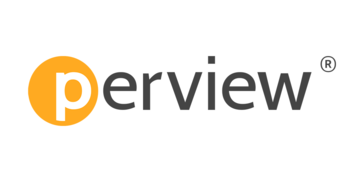- factoHR is a software that manages various HR tasks including recruitment, payroll, performance management, and attendance tracking.
- Users frequently mention that factoHR has streamlined their HR processes, automated payroll, simplified performance tracking, and provided a user-friendly mobile app for easy access to HR tasks.
- Users reported occasional system slowdowns, a need for more industry-specific templates and third-party integrations, and minor lags when updating employee information.
Best Applicant Tracking Systems (ATS) - Page 2
Best Applicant Tracking Systems (ATS) At A Glance
G2 takes pride in showing unbiased reviews on user satisfaction in our ratings and reports. We do not allow paid placements in any of our ratings, rankings, or reports. Learn about our scoring methodologies.
- Overview
- User Satisfaction
- Seller Details
Construction companies and contractors have special workforce management needs, and Arcoro offers a suite of construction HR solutions that enables companies to address them successfully. Arcoro
- Construction
- Human Resources
- 71% Mid-Market
- 19% Small-Business
4 Twitter followers
- Overview
- Pros and Cons
- User Satisfaction
- Seller Details
EVA is a predictive & conversational AI. It sits within a process automation platform for HR / HCM professionals to enable innovative Talent Acquisition & Talent Management experiences. EVA.a
- International Affairs
- Human Resources
- 48% Enterprise
- 41% Small-Business
225 Twitter followers
- Overview
- Pros and Cons
- User Satisfaction
- Seller Details
An end-to-end recruitment platform that streamlines the experience for all the stakeholders involved in the hiring process of an organization - Talent acquisition, Interview Panel, Org admin, Recruitm
- 53% Small-Business
- 47% Mid-Market
- Overview
- User Satisfaction
- Seller Details
Alongside is a hiring software designed to improve the way people and companies discover each other. By leveraging big data insights, job advertising, employer branding, and social recruiting, you ca
- 66% Small-Business
- 29% Mid-Market
1,492 Twitter followers
- Overview
- Pros and Cons
- User Satisfaction
- Seller Details
Rival, formerly SilkRoad Technology, transforms HR processes with AI-powered solutions that simplify talent acquisition, modernize HR workflows, and accelerate workforce productivity, all in one box.
- Non-Profit Organization Management
- Hospital & Health Care
- 51% Mid-Market
- 42% Enterprise
7,871 Twitter followers
- Overview
- Pros and Cons
- User Satisfaction
- Seller Details
Mitratech Circa is a powerful talent acquisition and compliance management solution designed to help businesses build high-performing teams while ensuring regulatory peace of mind. The platform stream
- Talent Acquisition Manager
- HR Generalist
- Information Technology and Services
- Non-Profit Organization Management
- 63% Mid-Market
- 28% Enterprise
1,033 Twitter followers
- Overview
- User Satisfaction
- Seller Details
Traffit is a SaaS-based ATS software for recruitment agencies, HR departments and headhunters. It allows you to create your own searchable candidate database and manage your recruitment processes ever
- 58% Small-Business
- 42% Mid-Market
11 Twitter followers
- Overview
- Pros and Cons
- User Satisfaction
- Seller Details
Zappyhire is an AI-powered Recruitment Platform trusted by 17,800+ users globally. We help medium and large sized companies to screen, engage, and hire the best and the right talent faster. Our goal
- Information Technology and Services
- Computer Software
- 53% Mid-Market
- 32% Small-Business
83 Twitter followers
- Overview
- User Satisfaction
- Seller Details
CATS is a web-based applicant tracking system that helps recruiters and direct employers work more efficiently by automating the hiring process.
- Staffing and Recruiting
- Information Technology and Services
- 60% Small-Business
- 31% Mid-Market
2,611 Twitter followers
- Overview
- User Satisfaction
- Seller Details
Yello’s talent acquisition platform enables the world’s leading brands to deliver personalized candidate experiences to every job seeker, resulting in quality hires — faster. The centralized platform
- 94% Enterprise
- 6% Mid-Market
1,656 Twitter followers
- Overview
- Pros and Cons
- User Satisfaction
- Seller Details
Founded in 2002, ELMO Software is the trusted provider of HR technology solutions to 3,000+ organisations and two million end users across Australia, New Zealand and the UK. With a comprehensive su
- Hospital & Health Care
- Computer Software
- 82% Mid-Market
- 14% Enterprise
771 Twitter followers
- Overview
- Pros and Cons
- User Satisfaction
- Seller Details
Applicant Tracking System (ATS), CRM, Artificial Intelligence, Project Management & Analytics software for recruiting teams with dashboards, customizable metrics/analytics, global knowledge sharin
- Staffing and Recruiting
- 85% Small-Business
- 15% Mid-Market
- Overview
- Pros and Cons
- User Satisfaction
- Seller Details
A next-gen Software for Recruitment & Headhunting/Executive Search Firms. Used by staffing agencies across India, Intellohire is a SAAS-based platform for the global Recruitment & Staffing ind
- Recruitment Specialist
- Staffing and Recruiting
- Human Resources
- 93% Small-Business
- 7% Mid-Market
1 Twitter followers
- Overview
- User Satisfaction
- Seller Details
viRecruit is an applicant tracking system (ATS) that finds the best person for any position at professional services firms. It makes managing and automating any complex recruiting process feel simple,
- Law Practice
- Legal Services
- 85% Mid-Market
- 15% Small-Business
1,985 Twitter followers
- Overview
- User Satisfaction
- Seller Details
Snaphunt is a global hiring platform that helps fast-growing companies find, engage & hire the world's best talent. Our algorithm instantly matches employers to talent based on their specific r
- Computer Software
- Internet
- 49% Small-Business
- 41% Mid-Market
320 Twitter followers
- Overview
- User Satisfaction
- Seller Details
JobScore has powerful features to help you simplify your hiring: * Simple, easy to use, and intuitive interface built by a former recruiter! * Flexible, customizable, mobile * Well supported by a
- Information Technology and Services
- Marketing and Advertising
- 65% Mid-Market
- 30% Small-Business
621 Twitter followers
- Overview
- Pros and Cons
- User Satisfaction
- Seller Details
Applied is the essential platform for unbiased hiring. We often make decisions without realising that our unconscious biases play a role. This can even happen when we have good intentions, so natural
- Non-Profit Organization Management
- 57% Small-Business
- 38% Mid-Market
7,204 Twitter followers
- Overview
- Pros and Cons
- User Satisfaction
- Seller Details
JobAdder is a recruitment CRM and ATS built by recruiters for recruiters. We make it simple to connect our Front and Middle Office platform to your choice of Back Office accounting and HRIS tools for
- Director
- Recruitment Consultant
- Staffing and Recruiting
- Human Resources
- 74% Small-Business
- 22% Mid-Market
4,219 Twitter followers
- Overview
- Pros and Cons
- User Satisfaction
- Seller Details
Cornerstone Recruiting software enables companies with the tools to deliver an engaging candidate experience, streamline your hiring process, and make smarter hiring decisions. Quickly match and onboa
- Hospital & Health Care
- Higher Education
- 61% Enterprise
- 34% Mid-Market
13,092 Twitter followers
- Overview
- User Satisfaction
- Seller Details
Jobsoid is an Online Applicant Tracking System that offers you a complete recruitment solution for all kinds of your recruitment needs. It comes with a host of features - each designed to simplify eve
- 33% Mid-Market
- 33% Enterprise
106 Twitter followers
- Overview
- Pros and Cons
- User Satisfaction
- Seller Details
Tribepad is the trusted tech ally to smart(er) recruiters everywhere, designed to help you fall back in love with recruiting. We believe in fairer, faster, better hiring for everyone. Tribepad’s t
- Hospital & Health Care
- 44% Enterprise
- 44% Mid-Market
2,149 Twitter followers
- Overview
- User Satisfaction
- Seller Details
Mitratech TalentReef is a comprehensive talent management platform designed for those that rely on a high-volume hourly workforce. From recruitment to retention, Mitratech provides a centralized a
- Restaurants
- Food & Beverages
- 51% Mid-Market
- 41% Enterprise
1,033 Twitter followers
- Overview
- User Satisfaction
- Seller Details
Hirebridge is a powerful applicant tracking system which helps reach more candidates, identify the best ones, and facilitates collaboration.
- 47% Mid-Market
- 35% Enterprise
123 Twitter followers
- Overview
- User Satisfaction
- Seller Details
Adapt provides the ultimate user experience for fast-growing firms, helping you make more placements to maximize business performance. The SaaS technology brings together a powerful CRM for sales mana
- Staffing and Recruiting
- 56% Small-Business
- 39% Mid-Market
1,609 Twitter followers
- Overview
- User Satisfaction
- Seller Details
DATIS, Part of the ContinuumCloud, offers a completely unified HR and Payroll platform purpose-built for human services organizations. Our cloud-based software empowers employees, engages teams, and e
- Mental Health Care
- Non-Profit Organization Management
- 77% Mid-Market
- 16% Enterprise
622 Twitter followers
- Overview
- User Satisfaction
- Seller Details
With more than 9,000 happy clients and 17 years in business, ApplicantPro software and services helps increase qualified applicant flow and improve the entire hiring process from sourcing candidates t
- HR Manager
- Hospital & Health Care
- Construction
- 73% Mid-Market
- 20% Small-Business
2,243 Twitter followers
- Overview
- Pros and Cons
- User Satisfaction
- Seller Details
TempWorks is the leading provider of staffing and recruiting software. Trusted by the staffing industry for over 25 years, TempWorks serves staffing and recruiting firms of all sizes, from start-up to
- Staffing and Recruiting
- 45% Small-Business
- 42% Mid-Market
1,476 Twitter followers
- Overview
- Pros and Cons
- User Satisfaction
- Seller Details
CleverStaff is an all-in-one software system for applicant tracking and recruitment automation for businesses of all sizes with cloud and enterprise versions. It provides companies with a single plac
- 50% Mid-Market
- 42% Small-Business
31 Twitter followers
- Overview
- User Satisfaction
- Seller Details
HireBeat is a video recruiting platform that helps employers find, engage and hire talents at scale by offering recruiting automation. Unlike the first generation ATS, we streamline your entire recru
- 73% Small-Business
- 27% Mid-Market
17 Twitter followers
- Overview
- Pros and Cons
- User Satisfaction
- Seller Details
GoHire’s all-in-one talent hiring platform is the solution to a messy and chaotic hiring strategy. Say goodbye to painful hiring and expensive recruitment and join over 2,500 SMEs around the world who
- 64% Small-Business
- 27% Mid-Market
98 Twitter followers
- Overview
- User Satisfaction
- Seller Details
BrightMove is a leading provider of on-demand recruiting software for staffing firms, RPO providers and corporate HR departments. Founded in 2005, BrightMove has quickly become the applicant tracking
- Staffing and Recruiting
- 54% Small-Business
- 31% Mid-Market
1,733 Twitter followers
- Overview
- User Satisfaction
- Seller Details
MyNextHire is fully automated recruiting software that helps to hire the talent, and get improved returns on hiring efforts.
- 50% Enterprise
- 30% Mid-Market
35 Twitter followers
- Overview
- User Satisfaction
- Seller Details
SmartSearch is a leading global talent acquisition and staffing management SaaS platform that enables companies to effectively identify, recruit, onboard, and nurture top talent. We consistently drive
- Staffing and Recruiting
- Information Technology and Services
- 50% Mid-Market
- 30% Small-Business
1,736 Twitter followers
- Overview
- User Satisfaction
- Seller Details
Talent Ninja is an advanced job distribution platform. Our platform makes job boards compete for your jobs and guarantees you local candidates, whilst keeping costs down. We work with over 300 sel
- 50% Small-Business
- 30% Enterprise
256 Twitter followers
- Overview
- User Satisfaction
- Seller Details
TalentWall converts your candidate pipeline into a visual card wall, reflecting all of your Greenhouse candidate data in Real-Time. It offers more transparency to your hiring managers, collaborates be
- Computer Software
- 59% Mid-Market
- 18% Enterprise
308 Twitter followers
- Overview
- User Satisfaction
- Seller Details
It’s no longer enough to improve diversity. Businesses must actively fight discrimination in their hiring processes, because it’s the right thing to do. Headstart is applicant matching and managemen
- 70% Small-Business
- 20% Enterprise
667 Twitter followers
- Overview
- Pros and Cons
- User Satisfaction
- Seller Details
JOIN is a recruiting software that helps companies of all sizes find, attract, and hire top talent faster. With JOIN, users can create job ads in minutes and publish them across 15+ free and 250+ prem
- 67% Small-Business
- 40% Mid-Market
- Overview
- User Satisfaction
- Seller Details
flair is an all-in-one HR and recruitment solution that brings structure and simplicity to complex people-related processes – whether local, global, remote, or office-based. It has all the features HR
- Medical Practice
- Computer Software
- 74% Mid-Market
- 24% Small-Business
66 Twitter followers
- Overview
- Pros and Cons
- User Satisfaction
- Seller Details
Welcome to Lanteria HR: an All-In-One HR Solution powered by Microsoft With Lanteria, you can manage all your HR processes in one place, consolidating employee data, processes, and documents in an ea
- Marketing and Advertising
- Computer Software
- 50% Mid-Market
- 48% Small-Business
168 Twitter followers
- Overview
- User Satisfaction
- Seller Details
Wirkn is a video-first, SaaS-based platform that transforms the underserved frontline hiring experience by bringing qualified candidates and hiring managers closer together. Founded in 2015, it is the
- 60% Enterprise
- 20% Mid-Market
1,713 Twitter followers
- Overview
- Pros and Cons
- User Satisfaction
- Seller Details
Folks HR is a comprehensive Human Resource Information System (HRIS) solution specifically designed to assist small and medium-sized businesses in managing their HR processes efficiently. This softwar
- 53% Small-Business
- 47% Mid-Market
- Overview
- Pros and Cons
- User Satisfaction
- Seller Details
Hirex is an all-in-one recruitment platform designed to make hiring easier and more efficient for businesses of all sizes, especially small and medium-sized ones. With its simple interface and AI-powe
- Computer Software
- Information Technology and Services
- 50% Small-Business
- 44% Mid-Market
- Overview
- Pros and Cons
- User Satisfaction
- Seller Details
Easy-To-Use and customizable Applicant Tracking System ("ATS"). Reduce your overall hiring cost & time to hire while improving the quality of hire.
- 67% Mid-Market
- 22% Small-Business
3,943 Twitter followers
- Overview
- Pros and Cons
- User Satisfaction
- Seller Details
At ZenHR, we are all about giving our users peace of mind. ZenHR is not just another HR software; it is a transformative HR experience created to help HR departments and employees reach a state of Zen
- Information Technology and Services
- Computer Software
- 49% Mid-Market
- 45% Small-Business
14,004 Twitter followers
- Overview
- Pros and Cons
- User Satisfaction
- Seller Details
ActionHRM provides a multi-platform, online business platform for managing employees.
- 40% Enterprise
- 40% Small-Business
188 Twitter followers
- Overview
- Pros and Cons
- User Satisfaction
- Seller Details
Cadient is a comprehensive, full-suite talent acquisition solution. With a broad range of features, we can help you through the entire applicant lifecyle, from attracting applicants, to assessing and
- 67% Mid-Market
- 33% Enterprise
- Overview
- Pros and Cons
- User Satisfaction
- Seller Details
EBSHR is a simple yet robust solution for organizations that struggle with managing the complex needs of their HR department. The software is packed with features to help you improve efficiency and in
- 69% Mid-Market
- 19% Enterprise
1 Twitter followers
- Overview
- Pros and Cons
- User Satisfaction
- Seller Details
Exelare is an applicant tracking system (ATS) and recruitment software tool.
- 67% Small-Business
- 33% Mid-Market
365 Twitter followers
- Overview
- Pros and Cons
- User Satisfaction
- Seller Details
Hireserve ATS is an intuitive, highly configurable, and robust Applicant Tracking System trusted by in-house recruiters around the world. Our solutions have been designed by industry specialists t
- 67% Enterprise
- 33% Small-Business
- Overview
- Pros and Cons
- User Satisfaction
- Seller Details
Forget those tedious sheets! Sloneek is a cloud-based HR system perfect for hybrid teams working across different countries. 🦸 It uses super smart tools, like an AI assistant, to save you up to 20 hou
- Computer Software
- Information Technology and Services
- 73% Small-Business
- 27% Mid-Market
7 Twitter followers
- Overview
- Pros and Cons
- User Satisfaction
- Seller Details
Tacitbase is an all-in-one hiring platform that streamlines the recruitment process. It offers features for job posting, candidate tracking, interview scheduling, and offer management. Key features in
- 75% Small-Business
- 25% Mid-Market
- Overview
- User Satisfaction
- Seller Details
Cascade is a secure browser based software solution for your HR and payroll needs that helps with customizable modules to fit your business.
- 47% Mid-Market
- 29% Enterprise
1,326 Twitter followers
- Overview
- User Satisfaction
- Seller Details
Cyber Recruiter is an Applicant Tracking System that help Recruiting Departments reduce workload on staff while ensuring vital details are not overlooked, it manages the entire recruiting process more
- 40% Enterprise
- 40% Mid-Market
2,368 Twitter followers
- Overview
- Pros and Cons
- User Satisfaction
- Seller Details
With 2000 clients, eRecruiter is the most frequently chosen recruitment management platform in Poland, used every day by 37 000 recruiters for sourcing job applications, contacting candidates and coop
- 42% Enterprise
- 42% Mid-Market
86 Twitter followers
- Overview
- Pros and Cons
- User Satisfaction
- Seller Details
fasthire is an AI-powered ATS designed to make hiring fast, simple, and effective for small businesses/startups. Without an established brand, attracting talent can be challenging. Our mission is to s
- 60% Small-Business
- 40% Mid-Market
- Overview
- User Satisfaction
- Seller Details
Alchemus Talent Management Solution is a set of integrated organizational HR processes designed to attract, develop, motivate, and retain productive and engaged employees.
- 50% Enterprise
- 50% Mid-Market
31 Twitter followers
- Overview
- User Satisfaction
- Seller Details
- 75% Mid-Market
- 25% Enterprise
- Overview
- Pros and Cons
- User Satisfaction
- Seller Details
Chillifactor is an all-in-one recruitment management software.
- Staffing and Recruiting
- 88% Mid-Market
- 13% Small-Business
306 Twitter followers
- Overview
- Pros and Cons
- User Satisfaction
- Seller Details
JobArch is a Recruiting Software developed for SMEs, Staffing agencies and recruitment companies of small sizes, that effectively enables to improve recruitment processes. It's available in 6 language
- Staffing and Recruiting
- 60% Small-Business
- 40% Mid-Market
52 Twitter followers
- Overview
- User Satisfaction
- Seller Details
Top talent is quickly snatched up, but our Applicant Tracking System (ATS) gives you a competitive edge in hiring. Optimize job posting and resume screening across job boards to manage candidates more
- 100% Mid-Market
10,988 Twitter followers
- Overview
- Pros and Cons
- User Satisfaction
- Seller Details
Resourceinn is a complete cloud-based HRMS & Payroll explicitly designed for mid-sized businesses & multi-organizational structures to help them scale better by enabling HRs to make the right
- Information Technology and Services
- 58% Mid-Market
- 42% Small-Business
- Overview
- User Satisfaction
- Seller Details
softgarden is one of the leading European HR-tech solutions for innovative recruiting. More than 1,500 employers of all sectors and sizes attract the best candidates with the cloud-based Talent Acquis
- 50% Mid-Market
- 25% Enterprise
1,213 Twitter followers
- Overview
- Pros and Cons
- User Satisfaction
- Seller Details
Accelerec is an intelligent Applicant Tracking System that helps businesses hire better, faster. Our AI technology automatically screens candidates, posts jobs across multiple platforms, and finds the
- 67% Mid-Market
- 33% Small-Business
- Overview
- Pros and Cons
- User Satisfaction
- Seller Details
We're the go-to HR and payroll software and solutions partner for medium and large organisations in the UK. Our integrated HR, payroll, benefits, learning and recruitment software, services and conten
- 40% Enterprise
- 40% Small-Business
10,571 Twitter followers
- Overview
- Pros and Cons
- User Satisfaction
- Seller Details
Elevate your HR management with factoHR, an advanced, mobile-centric HCM platform that automates every HR function from hire to retire. Our intelligent platform delivers actionable insights, empowerin
- HR
- HR Manager
- Marketing and Advertising
- Consumer Goods
- 72% Mid-Market
- 20% Enterprise
- factoHR is a software that manages various HR tasks including recruitment, payroll, performance management, and attendance tracking.
- Users frequently mention that factoHR has streamlined their HR processes, automated payroll, simplified performance tracking, and provided a user-friendly mobile app for easy access to HR tasks.
- Users reported occasional system slowdowns, a need for more industry-specific templates and third-party integrations, and minor lags when updating employee information.
74 Twitter followers
- Overview
- Pros and Cons
- User Satisfaction
- Seller Details
GetHired.com offers recruitment platform to efficiently pre-screen and track candidates.
- 33% Enterprise
- 33% Mid-Market
4,559 Twitter followers
- Overview
- User Satisfaction
- Seller Details
We are the first HRIS (Human Resources Information System) software in Iran. The only integrated human resources tool that is provided. An integrated software that works seamlessly together The audi
- 67% Small-Business
- 33% Mid-Market
- Overview
- User Satisfaction
- Seller Details
Peoplise is an integrated cloud based recruitment, onboarding management, and applicant tracking system (ATS) designed to assist internal HR teams. Our recruiting platform accelerates recruiting with
- 67% Enterprise
- 33% Mid-Market
1,282 Twitter followers
- Overview
- Pros and Cons
- User Satisfaction
- Seller Details
Human Capital Management Software (focus performance management)
- 40% Enterprise
- 40% Mid-Market
157 Twitter followers
- Overview
- Pros and Cons
- User Satisfaction
- Seller Details
Skima AI is a recruiter-centric, end-to-end AI recruitment platform that streamlines sourcing, screening, and outreach. With advanced AI features and enterprise-grade security, it is built for recruit
- 87% Small-Business
- 13% Mid-Market
- Overview
- Pros and Cons
- User Satisfaction
- Seller Details
Initiate Collaborative Hiring with Teamdoor. Lightweight applicant tracking and recruitment analytics. Best solution for optimizing you
- 33% Mid-Market
- 33% Enterprise
- Overview
- User Satisfaction
- Seller Details
Ubeeo is an experienced recruitment software supplier with a focus on corporate recruitment. Our software integrates seamlessly with career sites, providing optimal support for the candidate experienc
- 67% Small-Business
- 33% Enterprise
- Overview
- User Satisfaction
- Seller Details
AcquireTM is a simple, yet powerful solution, that gives you the tools to take control of your recruiting and hiring process. Create a positive applicant and new hire experience, improve recruitment c
- 50% Enterprise
- 50% Mid-Market
57 Twitter followers
- Overview
- User Satisfaction
- Seller Details
ATS OnDemand is a talent management software that includes onboarding, agency management, CRM, and talent network.
- 50% Enterprise
- 50% Small-Business
123 Twitter followers
- Overview
- Pros and Cons
- User Satisfaction
- Seller Details
Do you find it challenging to hire the right candidates? Meet Beehire, a user-friendly recruiting platform that helps companies and teams streamline their recruitment process. From posting a job offer
- 50% Enterprise
- 50% Small-Business
- Overview
- Pros and Cons
- User Satisfaction
- Seller Details
CareerAtlas ATS - The Smarter Way to Hire Our Reliable SaaS solution 'Built For Recruiters' – Streamlines Recruitment, so businesses can ‘hire right and hire fast.' AI-powered tools and solutions c
- 100% Small-Business
- Overview
- User Satisfaction
- Seller Details
CrescoWorks ATS(Applicant Tracking System) has unfair advantage over competitors. CrescoWorks provides unprecedented level of automation to Recruitment Team bringing utmost efficiency. Spanning end-to
- 50% Enterprise
- 50% Mid-Market
- Overview
- User Satisfaction
- Seller Details
Employ is an innovative AI-driven recruitment platform that revolutionizes the way businesses hire top talent. Our advanced technology combines artificial intelligence with intuitive features to strea
- 50% Small-Business
- 50% Mid-Market
- Overview
- User Satisfaction
- Seller Details
foh&boh (www.fohandboh.com) is a platform helping restaurants, hotels and retailers hire and onboard employees faster. We help businesses speed up the hiring process drastically by connecting oper
- 100% Mid-Market
29 Twitter followers
- Overview
- Pros and Cons
- User Satisfaction
- Seller Details
HireScore is a customizable recruitment platform that helps you streamline candidate sourcing, screenings, assessments, rankings, and interview scheduling. Every step of the way is tailored to meet th
- 50% Mid-Market
- 50% Small-Business
443 Twitter followers
- Overview
- Pros and Cons
- User Satisfaction
- Seller Details
Hirestream gives your recruitment function more power over hiring decisions that matter. It automates the tasks that slow you down - shortlisting, scheduling, applicant job matching - and refines your
- 67% Small-Business
- 33% Enterprise
- Overview
- Pros and Cons
- User Satisfaction
- Seller Details
HRGP is the most affordable ATS on the market today. $99 per month includes unlimited users, jobs, applicants, and employees. Here are some of the key features: - Automated job distribution - Optimi
- 67% Small-Business
- 33% Mid-Market
- Overview
- User Satisfaction
- Seller Details
In-recruiting is an applicant tracking system (ATS), a cloud-based application that allows you to manage the entire recruiting process, from the collection of resumes to hiring, all on an intuitive an
- 67% Enterprise
- 33% Mid-Market
685 Twitter followers
- Overview
- Pros and Cons
- User Satisfaction
- Seller Details
Jobin.cloud is an All-in-one AI Recruiting and Lead Gen Platform with advanced LinkedIn automation. 🔍 1. Advanced Sourcing from LinkedIn • Bulk import of LinkedIn profiles (including Sales Navigat
- 100% Small-Business
- Overview
- User Satisfaction
- Seller Details
Jobtrain is a UK-based provider of applicant tracking systems, talent and insight services. We’re proud of our 20+ year track record delivering first-class ATS solutions and services to a multitude o
- 50% Enterprise
- 50% Mid-Market
- Overview
- User Satisfaction
- Seller Details
LANDED is an all-in-one talent acquisition software.
- 100% Mid-Market
237 Twitter followers
- Overview
- User Satisfaction
- Seller Details
An Automated Talent Acquisition Platform to Parse & Match resumes to appropriate Jobs as well as Visualizing those resumes, conduct Parallel Audio Interviews, and provide Emotional intelligence (
- 100% Mid-Market
676 Twitter followers
- Overview
- Pros and Cons
- User Satisfaction
- Seller Details
OnBlick HR' is a SaaS platform Empowering Employers in the US with nuances around HR Compliance & Immigration. OnBlick's guided processes help minimize standard RFEs and maximize Approvals. It aut
- HR Manager
- HR Associate
- Information Technology and Services
- Staffing and Recruiting
- 64% Small-Business
- 36% Mid-Market
423 Twitter followers
- Overview
- Pros and Cons
- User Satisfaction
- Seller Details
PrajjoHR is a platform that has more than 40 HR Software on it. These are in the areas of Recruitment & Selection, Onboarding, Training & Development, Compensation & Benefits, Payroll, Emp
- 67% Mid-Market
- 33% Enterprise
- Overview
- Pros and Cons
- User Satisfaction
- Seller Details
"Revolutionize your hiring process with Talent Connects ATS, the ultimate recruitment solution for streamlined candidate management and data-driven insights. Unlock the power of intelligent talent acq
- 50% Small-Business
- 50% Mid-Market
- Overview
- User Satisfaction
- Seller Details
Talent Genie is a recruitment software (applicant tracking system (ATS)) that uses linguistic patter recognition and A.I. to shortlist candidates automatically , retype CVs and track their location in
- 100% Small-Business
- Overview
- User Satisfaction
- Seller Details
Vacancy Filler Recruitment Software allows organisations to significantly reduce their hiring costs through process efficiencies with less reliance on expensive job agencies. Adopted in both the Publi
- 67% Small-Business
- 33% Mid-Market
1,271 Twitter followers
- Overview
- User Satisfaction
- Seller Details
Voyse is a Recruitment Marketing platform that empowers talent teams to showcase their culture and business to candidates, long before they arrive for an interview. Integrated directly with your ATS
- 67% Small-Business
- 33% Mid-Market
- Overview
- Pros and Cons
- User Satisfaction
- Seller Details
WorkTaps is a modern employee referral platform that empowers hourly and deskless workforces to become your best recruiters. We make it easy and rewarding for employees to share job openings with th
- 100% Mid-Market
- Overview
- Pros and Cons
- User Satisfaction
- Seller Details
Automates the entire recruiting process from resume to placement with the capability to maintain all related records. Zoniac Swift is easy to use covering all the essential ATS functionalities and the
- 50% Mid-Market
- 50% Small-Business
- Overview
- User Satisfaction
- Seller Details
Applicant Starter is a cloud-based applicant tracking system (ATS) that offers personnel tracking, social sharing and communication management within a one suite.
- 100% Mid-Market
73 Twitter followers
- Overview
- User Satisfaction
- Seller Details
Run your payroll in half the time with Avanti. We’re Avanti Software. We’ve been processing payrolls and developing HR technology in Canada for over four decades. Our cloud-based People Management
- 80% Mid-Market
- 10% Small-Business
266 Twitter followers
- Overview
- Pros and Cons
- User Satisfaction
- Seller Details
Avenu is an AI-powered hiring platform that revolutionizes recruitment by seamlessly connecting businesses with top talent and offering effortless, paperless onboarding for new hires.
- 100% Small-Business
- Overview
- Pros and Cons
- User Satisfaction
- Seller Details
Applicant Tracking System that is designed for the hospitality and service industry, accelerating the hiring process by efficiently qualifying and managing candidates through AI-driven technology, cus
- 100% Mid-Market
- Overview
- User Satisfaction
- Seller Details
Cavall is a cloud-based applicant tracking system that provides HR professionals with a complete web-based solution allowing them to collect candidates from different sources, upload resumes and parse
- 100% Mid-Market


























































